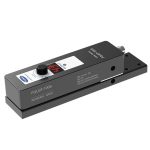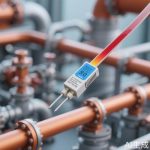In the fast-paced world of industrial automation, stability isn’t just a desirable feature—it’s the backbone of operational excellence. Industrial sensors serve as the nervous system of manufacturing facilities, constantly gathering data that drives decision-making processes. When these sensors maintain consistent performance over time, they create a foundation of reliability that transforms how industries operate. The quest for perfect sensor stability has become one of the most crucial pursuits in modern industrial engineering.
Imagine a production line where every measurement, every reading, and every data point remains consistent across months and years of continuous operation. This level of reliability eliminates unexpected downtime, reduces maintenance costs, and ensures product quality remains uncompromised. Stable sensors become trusted partners in the manufacturing process, providing accurate feedback that enables predictive maintenance and optimized performance. The financial implications of such consistency are profound, potentially saving companies millions in avoided disruptions and quality issues.
The journey toward achieving sensor stability begins with understanding the environmental challenges these devices face. Industrial environments are notoriously harsh—subjecting equipment to extreme temperatures, vibration, moisture, and electromagnetic interference. Manufacturers combat these challenges through robust design, advanced materials, and sophisticated calibration techniques. The use of temperature compensation algorithms, shock-resistant housing, and corrosion-resistant materials has become standard practice in developing sensors that can withstand industrial conditions while maintaining accuracy.
Technological advancements continue to push the boundaries of what’s possible in sensor stability. The integration of artificial intelligence and machine learning has enabled sensors to not only maintain their accuracy but actually improve it over time. Smart sensors can now detect patterns in their own performance, identify potential drift before it becomes problematic, and even self-calibrate based on environmental changes. This evolution from passive measurement devices to intelligent, adaptive systems represents a quantum leap in industrial sensor technology.
The impact of sensor stability extends beyond individual machines to entire production ecosystems. In interconnected Industry 4.0 environments, where sensors communicate with each other and central control systems, the stability of each component becomes critical to system-wide performance. A single unstable sensor can create cascading effects, leading to erroneous decisions based on faulty data. This interconnectedness makes the pursuit of stability not just an engineering challenge but a strategic imperative for businesses embracing digital transformation.
Looking toward the future, the importance of industrial sensor stability will only continue to grow. As manufacturers pursue increasingly ambitious goals in efficiency, quality, and sustainability, they will rely ever more heavily on the consistent, accurate data that stable sensors provide. The companies that invest in and prioritize sensor stability today will find themselves at a significant competitive advantage tomorrow, capable of achieving levels of operational excellence that others can only aspire to reach.




Leave a Message